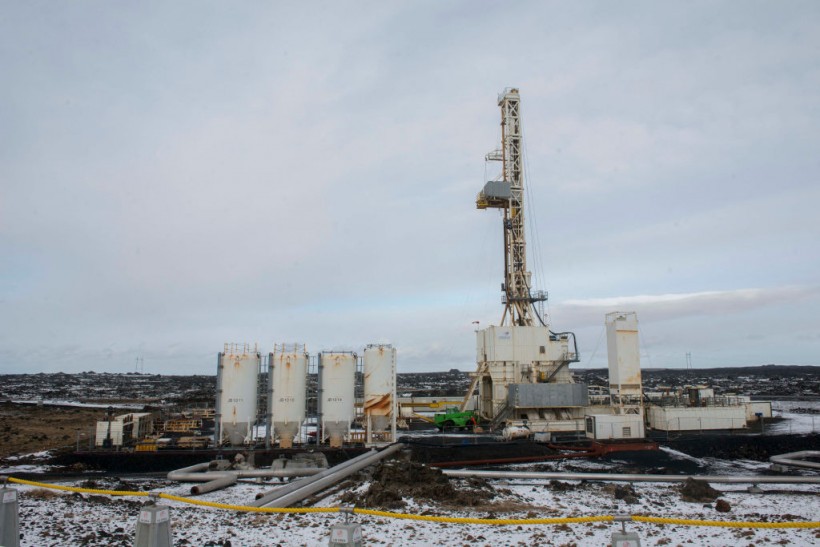Iceland Plans To Drill Into a Volcano's Magma Chamber for Geothermal Energy Extraction in 2026
Iceland is a nation adorned with numerous boreholes strategically drilled into its rock, serving the purpose of extracting geothermal energy. Adding to this landscape of seemingly mundane features, another borehole is set to join the ranks, promising a venture far from dull and routine.

The Reykjanes geothermal power station is pictured on March 23, 2017 in Reykjanes at the southwestern tip of Iceland.
Iceland's Magma Drilling Project for Super-Hot Geothermal Power
Iceland is on the brink of scientific history as it endeavors to become the first nation to drill into a volcano's magma chamber, marking an ambitious project known as the Krafla Magma Testbed (KMT) set to commence in 2026.
The initiative aims to construct a borehole in the magma chamber of Krafla, a volcano situated in Iceland's northeastern region, positioned between one and two miles below the Earth's surface. This innovative approach is anticipated to unlock an abundant source of geothermal energy, propelling Iceland's homes and buildings into a new era of sustainable power.
Iceland has long been a pioneer in harnessing geothermal energy generated within the Earth, employing turbines to convert this heat into electricity. Presently, geothermal power plants in Iceland drill wells exceeding a mile in depth to extract hot water vapor, which is then separated into liquid water and steam.
However, University of Alaska Fairbanks volcanologist John Eichelberg said that the current geothermal energy extracted is relatively cool compared to steam at fossil fuel power plants. This inefficiency at lower temperatures has spurred interest in exploring super-hot geothermal sources.
The Krafla Magma Testbed project holds the promise of revolutionizing Iceland's energy landscape by tapping into the higher temperatures emanating from the magma chamber.
By doing so, the endeavor could yield a more potent and efficient energy supply, as these wells, drawing from near-magma super-hot geothermal sources, are anticipated to be up to ten times more powerful than conventional wells. This advancement could potentially enable the production of equivalent power output with fewer wells, presenting a significant leap in geothermal energy efficiency.
Safety Concerns on the KMT Project
From 1975 to 1984, Krafla, among the world's most active volcanoes, underwent a series of eruptions. Using seismometers, scientists were able to precisely locate its magma chamber approximately 1.2 miles beneath the caldera.
Landsvirkjun, Iceland's primary power company, has been operating a geothermal plant at Krafla since the late 1970s, featuring 33 boreholes tapping into on-site geothermal energy, yet none extending to the actual magma chamber.
Although drilling to such depths presents a challenge, experts affirm the process's safety despite the magma's extreme temperatures, reaching up to 2,372°F (1,300°C).
In 2009, the unintentional drilling into Krafla's magma reservoir during the Iceland Deep Drilling Project demonstrated the safety of drilling into magma without inducing an eruption, provided the right tools are utilized. Project manager Björn Þór Guðmundsson emphasizes the KMT project's goal of developing materials capable of withstanding the extreme conditions of the magma chamber.
Commencing in 2026, KMT embarks on a journey to the magma chamber, planning to use sensors and fluid injection experiments for global insights. The ambitious project anticipates breaking ground near the initial borehole for a two-month journey, potentially revolutionizing volcanic activity forecasts worldwide with advancements like magma-resistant sensors.
RELATED ARTICLE: Startup Energy Company Plans to Drill the Deepest Hole Into Earth's Crust to Unleash Limitless Power
No comments:
Post a Comment